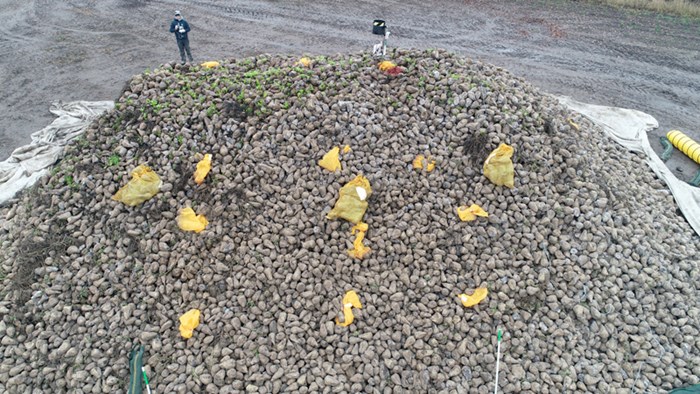Every winter, mounds of sugar beet roots dot the landscape of southern Sweden. Built from the toil of the season, these field “clamps” have been adopted as the means of minimising food loss in the period between harvest and processing. Beneath their fleece coverings hide many secrets. It is not that sugar beet growers do not have an understanding of the general state of the clamp, it is just that the scale and complexity of the system makes it difficult to fully quantify.
– In my project, I wanted to do more than just take a peek beneath the covers. It looked to deepen our understanding in two areas. The first area was what sugar beet growers can do to impact the physical robustness of their roots, what this means for storability, and how we can easily measure this. The second area was how temperature and moisture move and vary across the entire clamp profile, says William English.
William's project was part of SLU's industrial PhD program LivsID and he worked both at SLU and at the company Nordic Beet Research.
Water availability can impact storage durability
It turned out that growing season water and nitrogen availability do not have any marked impact on the mechanical properties of sugar beet roots.
– The benefit of this is that it means growers have one less agronomic relationship to worry about. However, we also found that water availability during the season did change how well roots tolerated being in storage, says William.
Ventilation without quality loss
Great effort is usually expended to avoid dehydration of fresh produce during post-harvest
storage, as it results in a loss of quality and value. Using forced ventilation over a short period, it was found that it is possible to achieve a high rate of dehydration in sugar beet roots without loss of quality, which in-turn could lead to increased payment per harvested tonne of the crop.
How’s the weather?
Using the same method used to model if tomorrow will be dry or wet, cold or warm, the beginnings of a model of the weather across the entire sugar beet clamp profile was developed.
– This model focused just on the temperature but could use the results of the above mentioned forced-ventilation project to expanded coverage to include moisture, concludes William.


